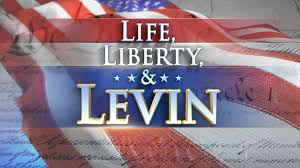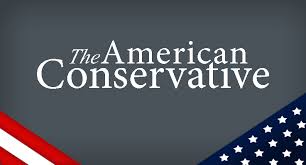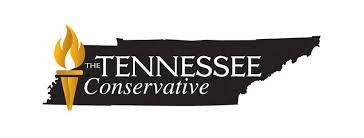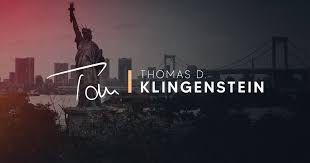The Preventive State
Responding to periodic exigencies confronting the nation defies reduction to a unitary “jurisprudential framework,” but good faith and common sense usually suffice.
This essay originally appeared in Law & Liberty on July 22, 2025 (here).
For nearly 60 years, Alan Dershowitz has enjoyed a remarkable career as a law professor and practicing criminal defense lawyer. In 1962, he graduated first in his class at Yale Law School, where he served as editor-in-chief of the Yale Law Journal. After clerking for Supreme Court Justice Arthur Goldberg, he joined the Harvard Law School faculty, where he was granted tenure in 1967 at age 28—becoming the youngest full professor in the school’s history at that time. Dershowitz taught at Harvard for 50 years, writing dozens of books and countless articles, while simultaneously becoming a leading criminal defense lawyer in many high-profile cases, including the O.J. Simpson trial.
A lifelong civil libertarian, and a political liberal, Dershowitz confounded his colleagues in 2020 when he joined the defense team for President Trump in his impeachment trial before the U.S. Senate, which resulted in an acquittal. Dershowitz complains that his tony neighbors on Martha’s Vineyard, his longtime summer retreat, have shunned him since he began to defend Trump. Dershowitz is also an outspoken champion of Israel and a supporter of Zionism. In 2024, Dershowitz announced that he had departed the Democratic Party due to his disgust with what he considered the anti-Jewish tone of the Democratic National Convention.

Now 86, Dershowitz stays busy with television appearances, scholarship, and writing. He remains one of the most impressive legal minds of his generation. When I heard that Dershowitz had just written a book that he describes as his “magnum opus,” I was eager to read it. The Preventive State—a term that Dershowitz coined in the 1960s—refers to governmental policies designed to prevent serious harm before it occurs. Dershowitz wrote his student note at Yale on the punishment of inchoate crimes—unsuccessful attempts to cause harm, and early in his career explored the involuntary commitment of individuals suffering from mental illness, ostensibly to protect themselves or the public.
In The Preventive State, Dershowitz returns to these themes, but expands the issues to include a host of modern-day threats: crime, domestic terrorism, nuclear proliferation, environmental hazards, infectious diseases, gun violence, offensive speech, hostile military action, and more. Technology has enhanced both the potential for causing serious harm and the presumed ability to predict such harm before it occurs. Dershowitz endeavors to synthesize an overarching “jurisprudential framework” for addressing the prevention of serious harms while preserving essential liberties. Realizing that “prediction will never be perfect,” Dershowitz concedes that “this book will necessarily be a work in progress,” and that constructing a “holistic” framework to deal with a “quickly developing and constantly changing phenomenon is a daunting task.” That is an understatement.

How successfully does Dershowitz make his case in a slim book (less than 200 pages of text)? In his Foreword, retired Justice Stephen Breyer concludes that “Dershowitz makes his case,” but other readers may find the one-size-fits-all approach to be simplistic and unworkable. In all of the situations Dershowitz addresses, the magnitude of the threatened harm must be balanced against the predictive accuracy of the preventive measure. When the government attempts to prevent future harm, Dershowitz posits that there are only four possible outcomes: an accurate prediction of harm and a successful prevention of it (what he terms a true positive); an accurate assessment that there is no threatened harm, with no preventive action (a true negative); and the more problematic scenarios of a predicted harm that would not materialize with or without preventive measures (a false positive); and the failure to predict a harm that could have been prevented with appropriate action (a false negative). The former (“true”) outcomes are beneficial to society, while the latter (“false”) outcomes are harmful.
False positives run the risk of infringing essential liberties with no corresponding benefit to society. Dershowitz cites the compulsory sterilization of the “feeble-minded” and other genetically unfit individuals–upheld by the Supreme Court in Buck v. Bell (1927) during the heyday of the eugenics movement—as the classic example of a false positive. He comments that “Buck v. Bell will be remembered by history as among the handful of the worst Supreme Court decisions, though authored by one of the greatest jurists (Holmes) and joined by some of our most distinguished justices (Brandeis, Taft, and Stone).”
False negatives are equally consequential. What if the U.S. government had been able to predict—and prevent—the Japanese attack on Pearl Harbor in 1941, or 9/11, or Soviet espionage to steal classified information relating to the atomic bomb, or the use of federal funds by the Wuhan Institute of Virology to conduct gain-of-function research on coronaviruses? While we’re at it, what if the government had been able to anticipate—and prevent–the assassination of Presidents Abraham Lincoln and John F. Kennedy, or John Brown’s attempted insurrection at Harper’s Ferry, or President Obama’s disastrous 2016 nuclear deal with Iran? Historians could play this counter-factual parlor game endlessly—and some do. My point is that for every lamentable false positive in our history we can find an equally lamentable false negative.
Hindsight is 20/20, but we must resist the false allure of omniscience. We don’t have a crystal ball to divine the future. Contra Dershowitz, there is no “science of prediction.” Humans are fallible and their predictions (and actions) are often mistaken. The history books are full of such mistakes; this will never change. It is easy to condemn decisions such as Buck v. Bell (decided by an 8-to-1 vote with no dissenting opinion) and Korematsu (decided by a 6-to-3 vote in a decision authored by the progressive Justice Hugo Black) after the fact, but one must acknowledge that when it comes to lawmaking and judicial review, contemporary circumstances—the zeitgeist—matter more than abstract theory.
Dershowitz grants as much, quoting Oliver Wendell Holmes’s aphorism from The Common Law that “The life of the law has not been logic, it has been experience.” Holmes’s pragmatism is also evident in his quip that “hard cases make bad law.” Dershowitz concurs, recognizing that “in a democracy the ultimate policy choices—often tragic choices among evils—must be made by its citizens.” As Dershowitz notes, during wartime many nations (not just our own) have preemptively detained those perceived to be disloyal or dangerous, in the interest of national security.
Dershowitz’s formalistic typology categorizes all potential outcomes into one of four conceptual boxes. The difficulty lies in applying the rigid matrix to real-life situations. Here, Dershowitz’s model offers little practical utility. When it comes to assessing risks of catastrophic harm, and analyzing the risk of false positives (weighed against the risk of inaction–or false negatives), factual distinctions are critically important.
The internment of Japanese-Americans during WWII is not the same as evaluating public health measures during COVID, or responding to the perceived threat of “climate change.” Preventing a mass-casualty terrorist incident is not the same as “stop and frisk” tactics by police officers walking their beat, or issuing a prior restraint on the press. Restricting speech to avoid perceived “harm” is different than so-called “red flag” laws denying citizens their Second Amendment rights, or water-boarding suspected terrorists to prevent catastrophic harm.
In short, the myriad situations Dershowitz tries to analyze under the same rubric—cash bail pending trial, censoring “harmful” speech, surveillance (or even torture) of suspected terrorists, preventive warfare, mandatory vaccines, red flag laws, etc.—warrant separate scrutiny depending on the facts. Dershowitz admits that “so much properly depends on the values at stake—on the content of the costs and benefits, the substance of what is being regulated, and the identity of those on whom the costs are imposed and the benefits realized.” This is not exactly a ringing endorsement of an overarching “jurisprudential framework.”
Yes, all preventive measures should be scrutinized objectively and dispassionately (or pursuant to a Rawlsian “veil of ignorance,” as Dershowitz would have it), the basis for “predictions” of future harm must be compelling (and honestly rendered), and due consideration has to be given to the risk of both false positives and false negatives. But in the final analysis, there is no substitute for acting in good faith and with common sense—both of which have been lacking in recent years. Government policy toward the COVID pandemic and national intelligence abuses (e.g., the Russian collusion hoax ) are just two examples.
Toward the end of the book, after a great deal of window-dressing, Dershowitz reveals the heart of his proposed jurisprudential framework: “procedural protections required for preventive state interventions,” consisting of a sliding scale for the requisite level of proof, depending on the length of involuntary confinement, and leaving aside forms of government authority other than confinement. When the government seeks to institutionalize an individual for a year or more, whether the proceeding is civil, criminal, medical, or administrative, Dershowitz’s proposed standard is proof beyond a reasonable doubt. Shorter periods of confinement warrant a lower standard, so that one to ten days of incarceration can be justified by “probable cause” or a “preponderance of the evidence.” Proposed intermediate standards for other durations of detention include “clear and convincing evidence” and “proof by heavy preponderance.”
Dershowitz’s framework presumably anticipates an adversarial proceeding before an impartial judicial officer, because he specifies the procedural protections that various lengths of confinement would entail. Ninety days or more would require a full panoply of due process rights, including the right to counsel, discovery, cross-examination, exclusion of hearsay, and “scrupulous” appellate review. This strikes me as unworkable. A contested adjudicatory hearing with discovery and appellate review could take months or even years. How is such an unwieldy process going to enable the prevention of imminent threatened harm?
Coercive preventive measures not involving confinement (censorship, surveillance, suspension of Second Amendment rights, and many others addressed by Dershowitz earlier in the book) are inexplicably left out of this procedure-oriented jurisprudential framework. Instead, for non-custodial government interventions, he proposes a “proper balance” between expected “false positives” and “false negatives.” Dershowitz dubs this mathematical relationship—reduced to a ratio—a “framework for mistake preferences.” He cites as a benchmark the maxim that “it is better that ten guilty be wrongfully acquitted than even one innocent be wrongly convicted.” He suggests that “Comparable numbers can be assigned to other preventive intrusions, such as shooting of fleeing suspects, government mandated censorship, vaccination… and red flag laws.”
I try to picture in my head the image of a policeman in hot pursuit of an armed suspect at night, simultaneously weighing the risks of a false positive versus a false negative and mentally calculating the appropriate ratio. This proposal is absurdly—even laughably—unrealistic, which Dershowitz seems to admit when he states “It would be more vexing to try to come up with numbers for steps taken to prevent climate change, preventive military actions, or other macro measures.” Another understatement.
While unsatisfying as a comprehensive theory, The Preventive State is still a well-written book loaded (some would say padded) with interesting nuggets and personal asides. For example, we learn that when Richard Lawrence attempted to assassinate President Andrew Jackson in 1835, failing only because both of his loaded pistols misfired, Lawrence could only be charged with a misdemeanor because, at the time, a felony required the infliction of actual harm. Miraculously, Jackson was unharmed. Accordingly, Lawrence’s bail was set at $1500, which—fortunately—the defendant was unable to post. The federal prosecutor was Francis Scott Key, author of the lyrics to what became our national anthem, “The Star-Spangled Banner.”
At trial, Key did not actively oppose Lawrence’s assertion of the insanity defense; the jury took only five minutes to find that Lawrence was insane. Key’s trial strategy was not motivated by compassion, but pragmatism. He realized that Lawrence would likely be incarcerated far longer as a madman than as a culpable criminal. In fact, Lawrence died while in confinement at what is now St. Elizabeths Hospital, decades later in 1861. (Ironically,President Reagan’s would-be assassin, John Hinckley, was also housed at St. Elizabeths following his 1982 acquittal by reason of insanity, until his eventual release in 2018.)
Dershowitz engagingly chronicles other presidential assassinations—both attempted and successful—to illustrate the great importance of false negatives. His point is that English common law, which influenced our early legal system, was based on punishment for actual, rather than threatened harms. American criminal codes have moved away from this limited scope and now prohibit “inchoate” crimes such as “attempts,” “conspiracies,” and so forth.
Dershowitz is a longtime opponent of the cash bail system (as well as capital punishment). His anecdote-laden treatment of these subjects, as well as sentencing and “preventive detention,” are basic and slightly off-topic. He favors electronic monitoring of criminal defendants (in the form of ankle bracelets) prior to trial in lieu of incarceration. Dershowitz’s enthusiasm for the Bill of Rights apparently does not include the Second Amendment; his chapter on gun violence drips with disdain for the private ownership of firearms.
Extending his analysis to foreign affairs, and to emphasize the importance of government surveillance, Dershowitz observes that
Israel’s failure to know about and prevent the massacres of October 7 may go down in history as among the most inexplicable intelligence failures by a nation that spent billions of dollars on information gathering.
On the topic of terrorism, Dershowitz is surprisingly receptive to the efficacy of torture in some situations. He notes that “the evidence clearly shows” that torture has produced “actionable intelligence that may save lives,” citing several historical examples. In his previous writings, Dershowitz has proposed judicial warrant procedures (to be granted only by the Chief Justice of the United States) for non-lethal interrogation techniques in extreme cases when circumstances justify the intrusion.
The Preventive State is more like a detailed seminar discussion guide than a formidable legal scholar’s “magnum opus.” The book is a mixture of war stories and dusted-off lecture notes relating to criminology, criminal law, criminal procedure, constitutional law, jurisprudence, and moral philosophy. Throughout The Preventive State, Dershowitz refers to Immanuel Kant, John Rawls, Jeremy Bentham, John Stuart Mill, Sigmund Freud, social Darwinism, and even military history and the Torah. At times Dershowitz drifts off into asides about “inequality,” the derivation of rights (which he posits are not endowed by our creator), and the elusive nature of utopian solutions. George Floyd, “climate change,” and Dershowitz’s gallbladder surgery all make an appearance. In self-referential fashion, Dershowitz cites to and quotes from some of his previous books and articles. At age 86, this prolific scholar is entitled to a victory lap (or two).
The test for a reviewer is “Did you like the book?” Despite my reservations, I did. Even if the proffered “jurisprudential framework” is unconvincing, Dershowitz makes a thoughtful and erudite plea for future leaders to avoid “striking the balance too much on the side of security and too little in favor of liberty.”
.
































